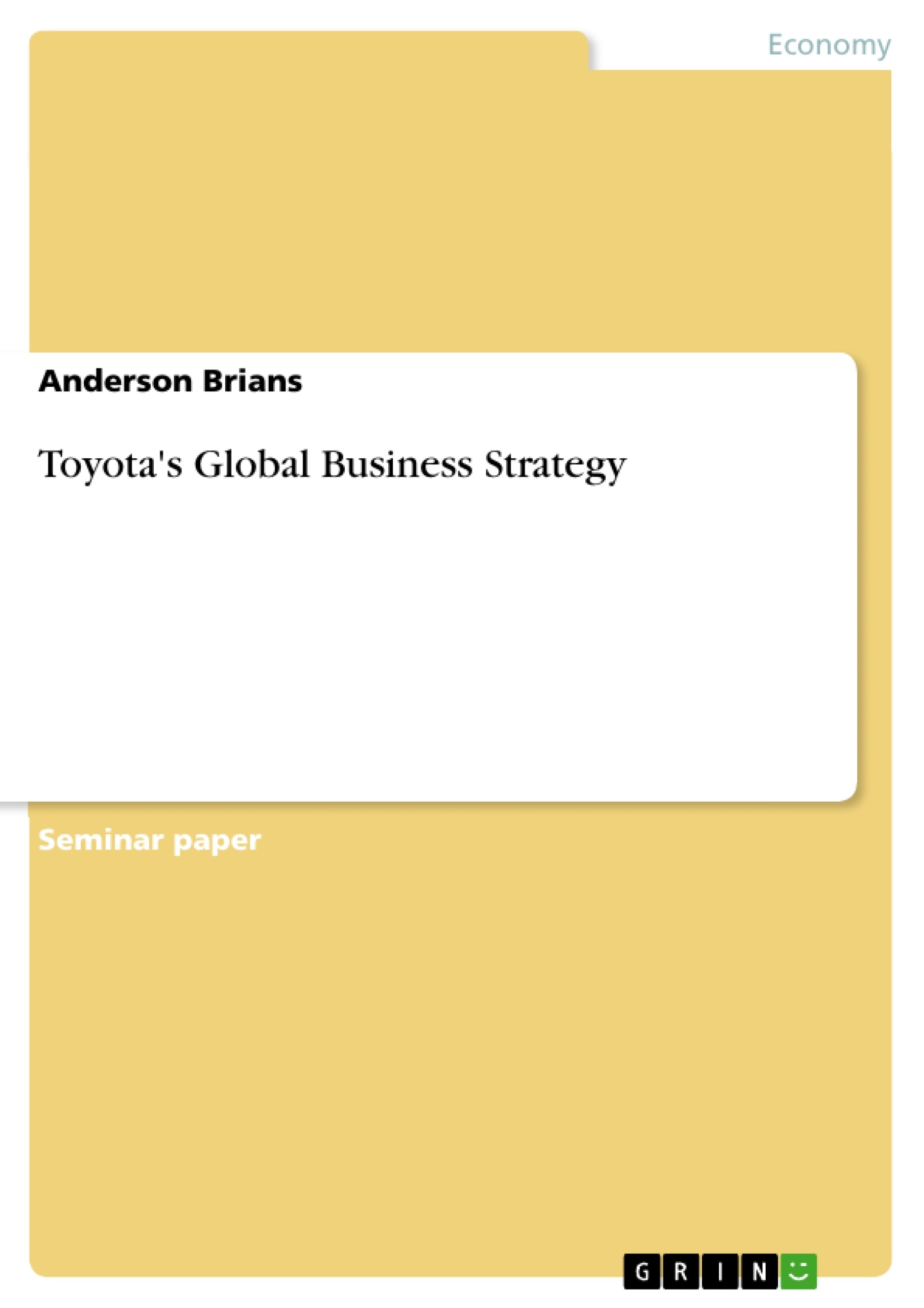Toyota, to all intents and purposes, has become a model for the automobile industry. As Taylor & Kahn (1997) write, automobile manufacturers are not trying to compete with Toyota as much as they are trying to learn from it and, strangely enough, Toyota appears to be quite a willing tutor. This is evidenced in the fact that, on a bi-monthly basis, the top automobile manufacturers across the United States are given a tour of Toyota’s plants and production and manufacturing facilities (Taylor & Kahn, 1997). This, however, does not put Toyota in any immediate danger of its giving away its secrets to its competitors since, as Schonberger (2001) points out, Toyota’s lean manufacturing model is not an industrial model per se as much as it is a management philosophy. This management and manufacturing philosophy is, without doubt, the key to Toyota’s global success but, upon consideration of the reasons for its recent overtake of the U.S. market, one finds that it is a combination of both its decision to Americanize and its management philosophy.
Toyota has Americanized and, its Americanization is largely, although not entirely, responsible for its success in the U.S. market. As Naughton et al. (2005) explain, a change of leadership at Toyota led to the abandonment of its “cooperative competition doctrine,” as which outlined that Toyota’s presence in the United States would not be that of a competitor whose goal was to overtake leading American car manufacturers such as GM. Instead, Toyota was to maintain a “respectful distance” in order to avoid arousing both public and political anger as a direct outcome of its appearing to undermine U.S. symbols, in this case GM (Naughton et al., 2005). Therefore, even though it had the capacity and the potential to compete with GM and, eventually, to dominate the U.S. market, Toyota’s leadership made the strategic decision to avoid doing so.
Table of Contents
- Toyota's Global Business Strategy
- Toyota's Americanization
- A Change in Leadership
- Americanization: A Domestic Image
- The American Management Philosophy
- Toyota's Lean Management Philosophy
- Lean Manufacturing and Its Implications
- Toyota's Unique Concept: Just-in-Time Manufacturing
Objectives and Key Themes
This text examines the factors contributing to Toyota's rise as a global leader in the automobile industry. It explores how Toyota's success is attributed to a combination of its strategic decision to "Americanize" and its adherence to its unique lean management philosophy.
- Toyota's Americanization strategy and its impact on the company's success in the U.S. market
- The role of Toyota's "cooperative competition" doctrine and its subsequent abandonment
- The significance of Toyota's lean manufacturing and management philosophy in its global expansion
- The importance of cultural adaptation and the creation of a domestic image in achieving global success
- The implications of Toyota's Just-in-Time manufacturing model and its impact on the company's operations
Chapter Summaries
The text begins by outlining Toyota's emergence as a model for the automobile industry, highlighting its willingness to share its knowledge and its unique management philosophy. It then delves into Toyota's Americanization strategy, examining the reasons behind its decision to embrace an American image and its subsequent success in the U.S. market. The text further explores the impact of Toyota's lean manufacturing and management philosophy, emphasizing its importance in the company's global expansion. Finally, the text discusses the implications of Toyota's Just-in-Time manufacturing model, emphasizing its unique and innovative approach to production.
Keywords
This work examines the core principles driving Toyota's global dominance in the automobile industry. Key themes include Toyota's Americanization strategy, its lean manufacturing philosophy, Just-in-Time manufacturing, cultural adaptation, and the creation of a domestic image. The analysis focuses on Toyota's decision to adopt an American identity and its unique management approach, emphasizing the key factors contributing to its global success.
- Quote paper
- Anderson Brians (Author), 2011, Toyota's Global Business Strategy, Munich, GRIN Verlag, https://www.grin.com/document/212161




